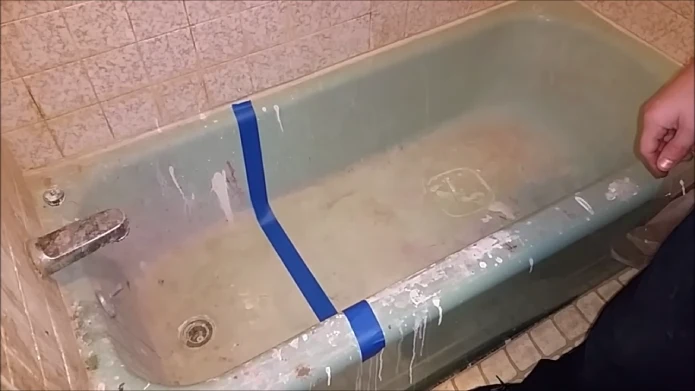Last Updated on November 14, 2023
Fiberglass bathtubs are a popular choice for bathroom remodeling because of their durability and easy maintenance. While they turn out tough and durable with corrosion-resistance and chemical-resistance properties, you should remove any dried paint from your fiberglass tub.
Whether using epoxy, acrylic latex, or acrylic enamel paint, you must know how to remove the dried paint properly so that your new coat looks as good as new.
The general process involves scrubbing the paint off with a plastic scraper, creating baking soda paste, and applying it to the affected area. Then, rub away those pesky spots using a non-abrasive powder cleaner to get the job done until everything is clear and rinsed thoroughly.
With the right techniques and tools, removing any type of dried paint from a fiberglass bathtub can be simple and effective. Let us show you how to make short work of removing those stubborn flecks of color from your tub.
How To Remove Dried Paint From Fiberglass Bathtub: 3 Effective Methods
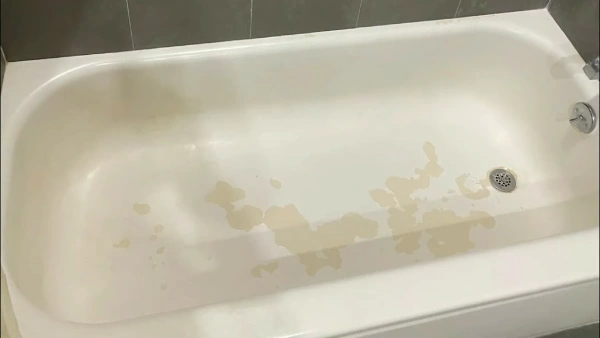
Getting rid of dried and faded paint from a fiberglass bathtub is a tricky task, depending on the type of paint used. If water-based paints like acrylic or latex are used, they can be removed with baking soda and water or an abrasive cleanser. For oil-based paint such as epoxy, more aggressive means are required to remove it.
1. Dried Acrylic Paint Removal Method:
Paint stains can be a real eyesore in a fiberglass bathtub. Fortunately, 6 steps can be used to remove dried Acrylic paint from fiberglass bathtubs without too much hassle.

Step 1: Gather Materials:
Begin by gathering all the necessary materials, including baking soda, water, paste, a damp sponge, Mr. Clean Magic Eraser scrubber, & mild powdered cleaner.
Step 2: Preparing the Area:
Before beginning the paint removal process, it is important to prep the area. To do this, make sure that the affected surface is free of dust and debris, and all items around the tub have been moved away. Gently clear away that faded paint with a plastic scraper for silky-smooth fiberglass.
It is advisable to wear gloves when handling chemicals or abrasive materials as these may cause skin irritation or burn if not handled properly. After prepping the area for cleaning, you are now ready to begin removing dry paint and cleaning debris and stains from your acrylic bathtub.
Step 3: Create a Paste and Apply:
Mix together equal parts of baking soda and water in a bowl or container to create a thick paste. Spread the paste over the painted area using your fingers or a cloth. Allow it to sit for about 10 minutes before proceeding any further.
Step 4: Rub off the Paint Spot:
After 10 minutes have passed, gently rub away at the dried paint spot with your fingers or use a damp sponge to help loosen up any stubborn remains of paint. Be sure not to apply too much pressure, as this can cause damage to your fiberglass tub’s surface.
Step 5: Use Cleaning Tools:
Once most of the paint has been removed, you can use a Mr. Clean Magic Eraser scrubber and non-abrasive powder cleaner to remove any stubborn residue that remains on the fiberglass tub’s surface.
Step 6: Rinse Thoroughly:
Rinse off all remaining residue with warm water until you have removed all traces of cleaning products from your fiberglass tub’s surface. Ensure you dry off after rinsing since leaving water droplets on it will cause damage over time.
2. Dried Epoxy Paint Removal Method Using Paint Stripping Chemicals:
Removing dried epoxy paint from a fiberglass bathtub requires patience. With the right knowledge and tools, however, you can successfully remove epoxy paint from your fiberglass bathtub without causing any damage.

Step 1. Prepare the Bathroom:
Before striping epoxy paint from the bathtub, ensure the bathroom area is properly ventilated. Open all windows, doors, and exhaust fans.
Put on protective gear, including gloves, long pants, a long-sleeved shirt, socks, eye protection (goggles), and a respirator to ensure proper lung protection. Lay down a trash bag under the work area so that any waste can easily be cleaned up afterward.
Step 2. Mix Paint Stripping Chemicals:
Using a plastic storage container or jar, mix together all of the necessary chemicals in accordance with their directions for use. Make sure to read through each instruction carefully before proceeding.
Step 3. Apply a Thick Layer of Paste:
Create a thick layer of paste by mixing paint stripping chemicals with sawdust or sand in a jar or plastic container. This paste should then be applied over the dried epoxy paint in an even layer and left for at least half an hour to sit.
Step 4. Scrape Away Paint:
Use a paint scraper to lift up sections of the epoxy and scrape off any remaining paste beneath.
Step 5. Wipe Away Residue:
Wipe down the area using either a wet rag or brush to remove any remaining residue before rinsing with clean water. Use a rough sponge dipped in commercial bathroom cleaner to scrub away any stubborn pieces of adhesive that remain on the surface of the bathtub.
Once all pieces have been removed, open windows and doors and turn on an exhaust fan for proper ventilation before disposing of all leftover materials in a trash bag.
3. Rubbing Alcohol Method For Removing Dried Epoxy Paint:

Step 1: Gather the Right Materials:
Before you begin, ensure you have all the necessary materials on hand. You will need rubbing alcohol, mineral spirits, steel wool or an abrasive scrubbing pad, and a soft cloth or sponge.
Step 2: Clean the Surface:
Use warm soapy water to thoroughly clean the surface of your fiberglass tub before attempting to remove the epoxy paint. This will help loosen up any stubborn deposits of paint that might be present before you begin scraping them away.
Step 3: Apply Rubbing Alcohol:
Put some rubbing alcohol onto a soft cloth or sponge and rub it onto the painted areas of your bathtub in order to help loosen up epoxy paint residue. This can take several minutes, depending on how stubborn the residue is.
Step 4: Scrub Away Residue:
Use steel wool or a scrubbing pad to carefully scrape away any remaining residue of epoxy paint from your tub’s surface. Be careful not to scratch or damage the underlying material while doing so. Go slowly and cautiously until all of the residues have been removed.
Step 5: Finish with Mineral Spirits:
Wipe down the entire surface using a soft cloth soaked in mineral spirits to ensure all traces of epoxy paint have been completely removed from your bathtub’s surface. No streaks are left behind by either rubbing alcohol or steel wool/scrubbing pad used during steps 3-4 above.
Step 6: Rinse & Dry:
Rinse off any remaining mineral spirits with lukewarm water and dry off everything with a clean towel before putting it back into use for its intended purpose once again.
What Types of Paint Are Used in Fiberglass Bathtubs?
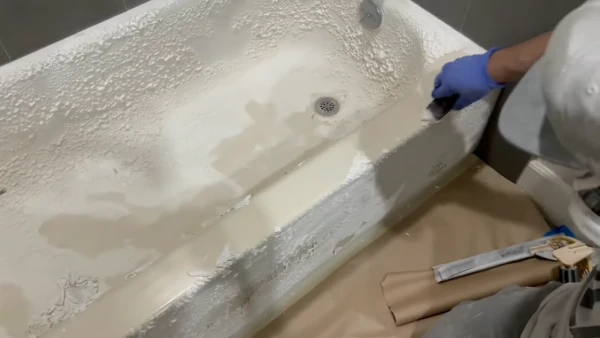
Painting a fiberglass bathtub is an important process that requires the right kind of paint. There are various types of paint that can be used, and each type has its own unique benefits. In this article, we will discuss the two most popular types of paint used on fiberglass bathtubs: epoxy and acrylic.
Epoxy Paint:
Epoxy paint is one of the most commonly used paints for fiberglass bathtubs. It is known for being tough and durable, making it ideal for high-traffic areas such as bathrooms.
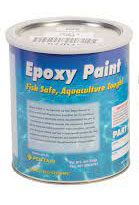
It has excellent corrosion resistance, making it a great choice for resistance to harsh chemicals and cleaning products over time. This paint is easy to clean, making it less time-consuming to maintain than other types of paint.
Acrylic Paint:
Another popular option when painting a fiberglass bathtub is acrylic paint. Generally speaking, there are three different types of acrylic paint: acrylic latex paint, acrylic latex enamel paint, and acrylic enamel paint, and each with its own specific benefits.
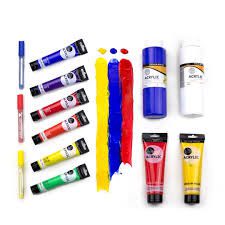
Acrylic paints are non-toxic, and they typically do not fade or crack over time as other paints might. They also tend to dry quickly, which makes them easier to apply and touch up if needed. Their durability makes them great for long-term use in wet environments like bathrooms without requiring frequent maintenance or re-application.
Will Paint Thinner Damage Fiberglass Bathtub?
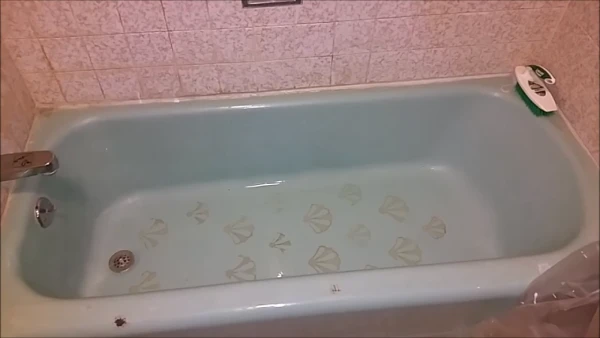
The paint thinner can damage the fiberglass bathtub. Paint thinner consists of various chemical solvents that can break down the resin and fibers of fiberglass, making it brittle and prone to cracking or breaking.
Does Dawn Dish Soap Get Dried Paint off Fiberglass?
Dawn dish soap can be used to get dried paint off the fiberglass. When diluted with warm water, it will help to dissolve the dried paint, making it easier to remove with a soft sponge or cloth.
Will WD 40 Remove Dried Paint on a Fiberglass Bathtub?
WD-40 is effective at removing dried paint on fiberglass. It works by softening the paint so that it is easier to scrape off with a plastic scraper or putty knife. In addition, the lubricating properties of WD-40 can help prevent scraping tools from scratching the underlying fiberglass surface during the removal of the dried paint.

Does Hydrogen Peroxide Remove Dried Paint from Fiberglass?

Hydrogen peroxide has properties to remove dried paint from fiberglass tubs. The peroxide oxidizes the pigments in the paint and causes them to lighten and flake away more easily when scraped with a plastic scraper.
Easily Restore Your Fiberglass Bathtub to Its Original State
Removing dried paint from a fiberglass bathtub may seem daunting, but it can be relatively simple with the right approach. By understanding which paints are most commonly used in fiberglass bathtubs and following appropriate methods for removing them, you can easily restore your tub to its original state.
Using proper precautions, such as using protective clothing and avoiding harsh chemical cleaners, you can ensure that no additional damage occurs during the process. You should have no problem removing any paint stains or spots with the right approach and materials.

